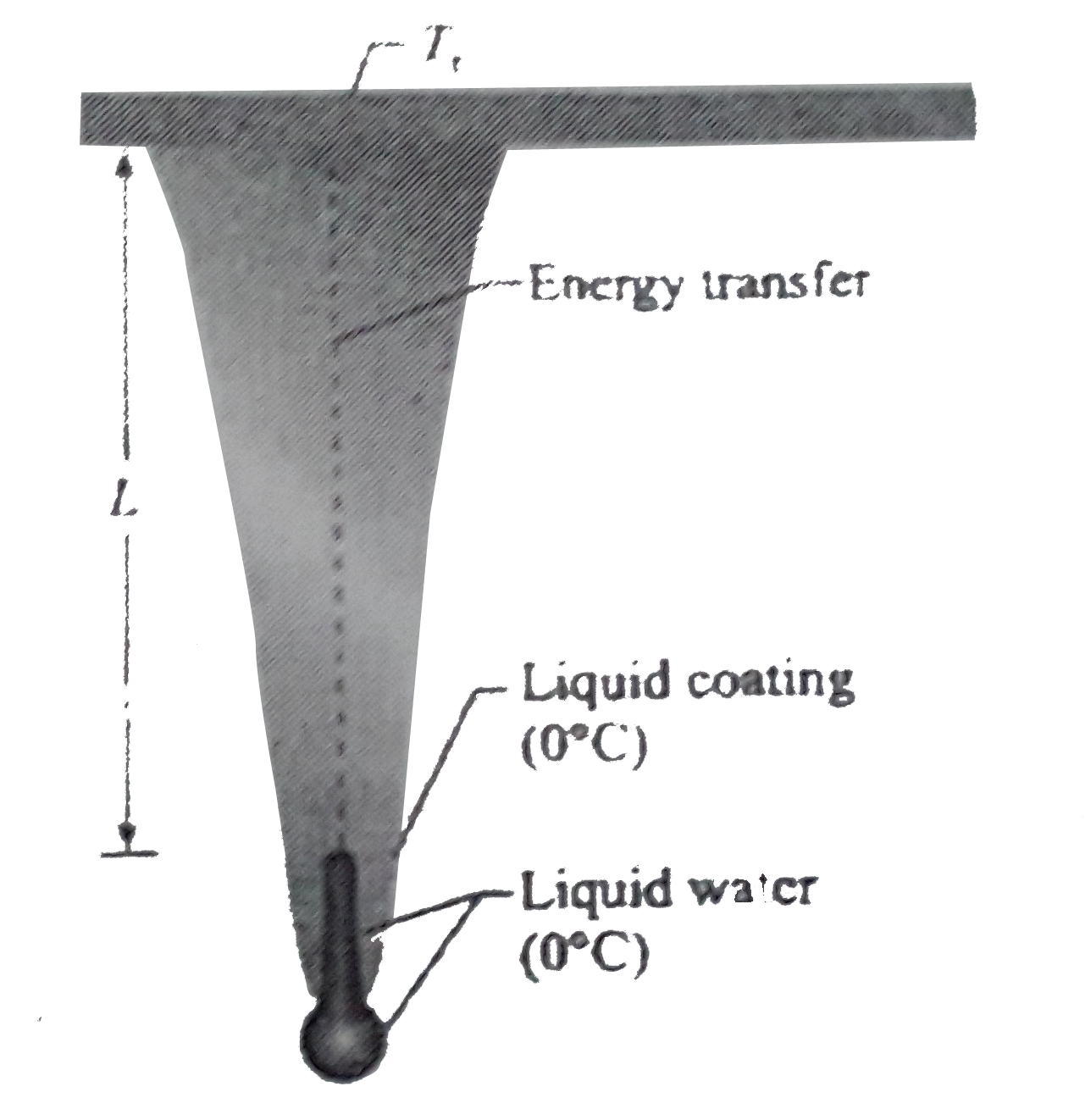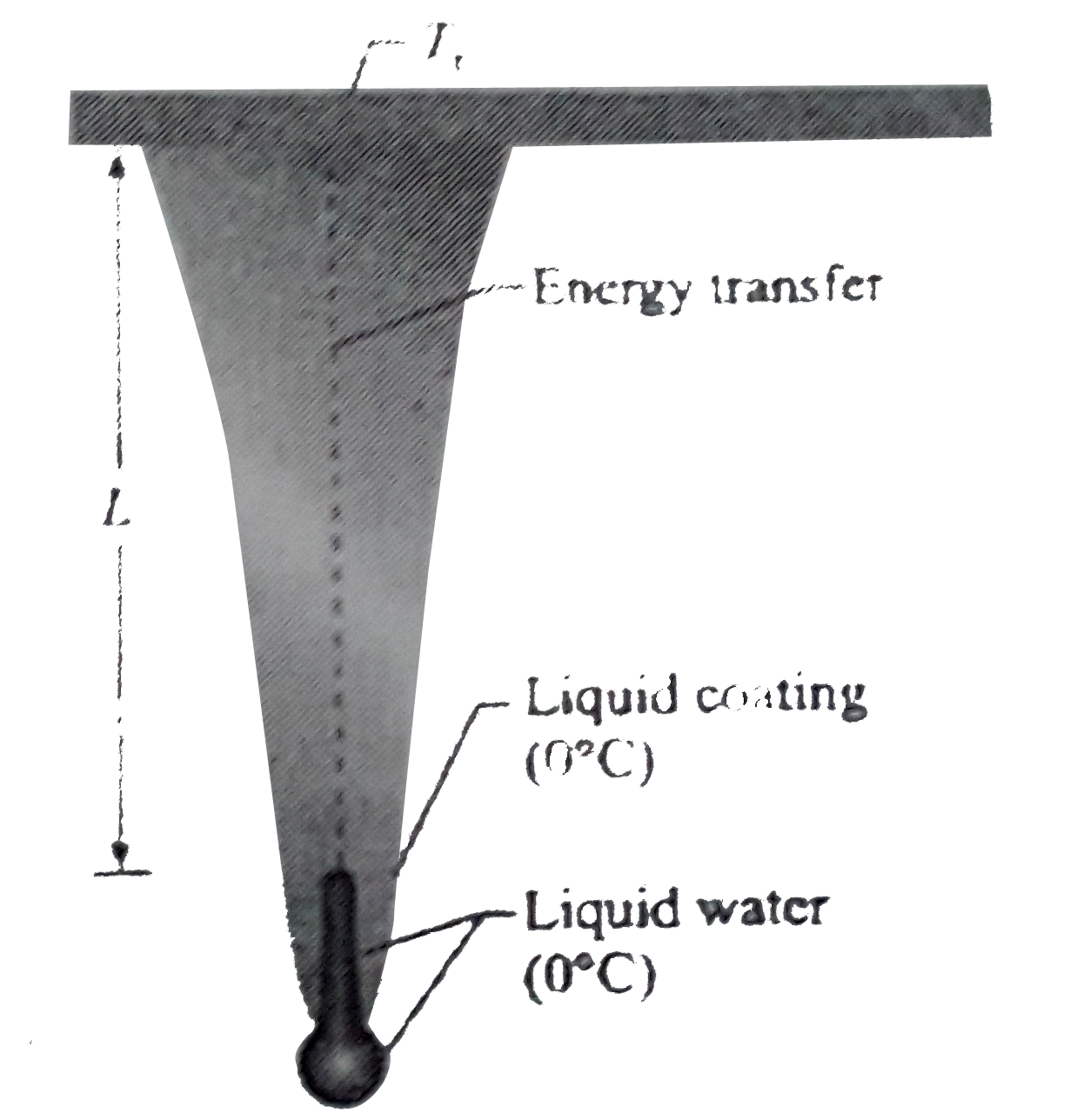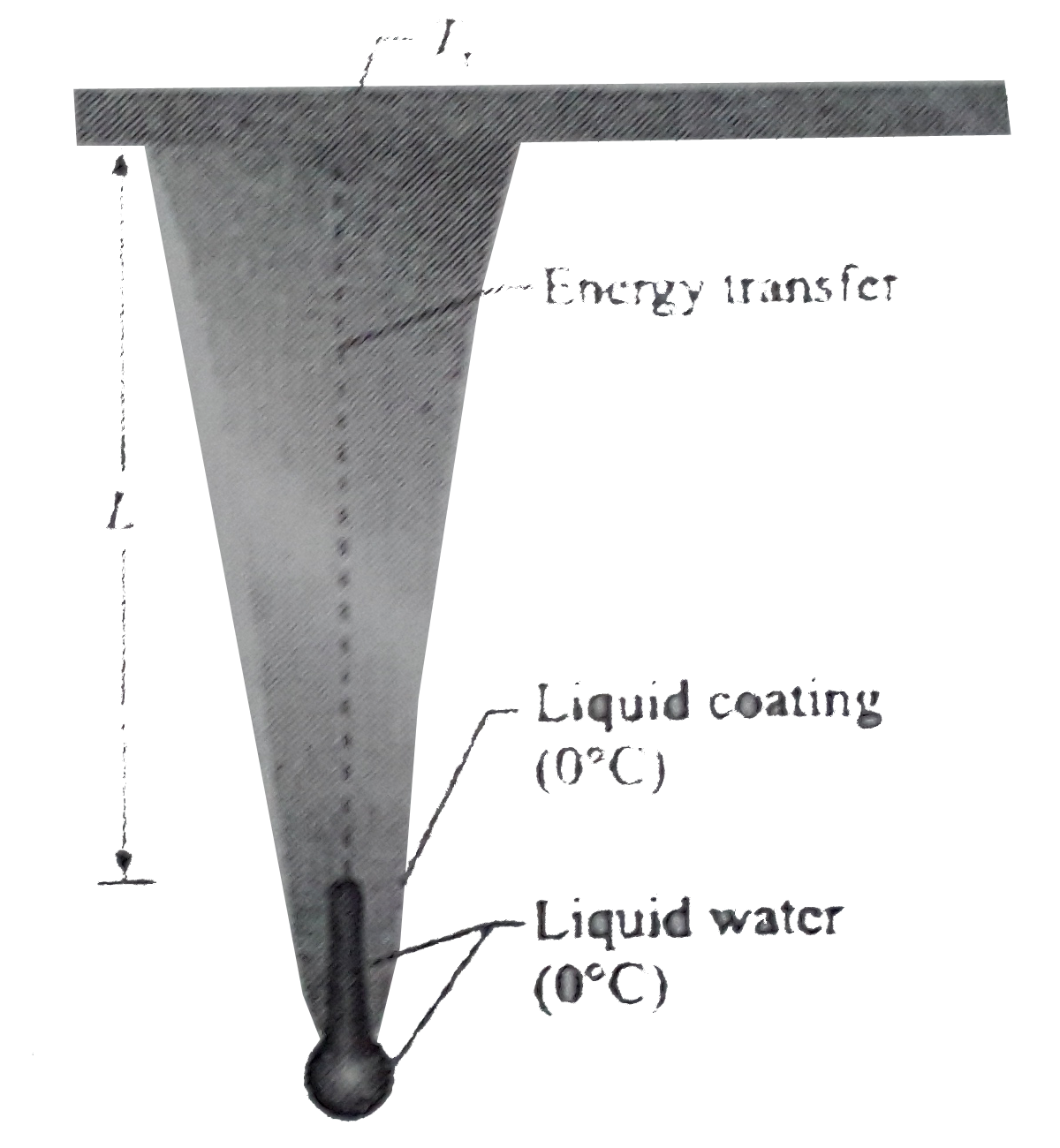Complete Solutions to Comprehension type of chapter TRANSMISSION OF HEAT of Class 11 book with complete answers and questions
| Class 11 | PHYSICS |
| Chapter | TRANSMISSION OF HEAT |
| CENGAGE PHYSICS DPP | Comprehension type |
| Number Of Questions | 3 |
| Academic Year | 2023-24 |
Liquid water coats an active (growing) icicle and extends up a short, narrow tube along the central axis. Because the water-ice interface must have a temperature of `0^(@)`C, the water in the tube cannot lose energy through the sides of the icicle or down through the tip because there is no temperature change in those directions . It can lose energy and freeze only by sending energy up(through distance L) to the top of the icicle, where the temperature `T_(r)` can be below `0^(@)`C. Take L=0.10m and `T_(r)`=`-5^(@)`C.Assume that the central tube and the upward conduction path both have crosse-sectional area A=0.5`m^(2)`. The thermal conductivity of ice is 0.40 W`//mcdotK`, latent heat of fusion is `L_(F)=4.0xx10^(5) J//K` and the density of liquid water is 1000 kg`//m^(3)`.

The rate at which the energy conducted upward isView SolutionLiquid water coats an active (growing) icicle and extends up a short, narrow tube along the central axis. Because the water-ice interface must have a temperature of `0^(@)`C, the water in the tube cannot lose energy through the sides of the icicle or down through the tip because there is no temperature change in those directions . It can lose energy and freeze only by sending energy up(through distance L) to the top of the icicle, where the temperature `T_(r)` can be below `0^(@)`C. Take L=0.10m and `T_(r)`=`-5^(@)`C.Assume that the central tube and the upward conduction path both have crosse-sectional area A=0.5`m^(2)`. The thermal conductivity of ice is 0.40 W`//mcdotK`, latent heat of fusion is `L_(F)=4.0xx10^(5) J//K` and the density of liquid water is 1000 kg`//m^(3)`.

The rate at which mass converted from liquid to ice at the top of the central tube isView SolutionLiquid water coats an active (growing) icicle and extends up a short, narrow tube along the central axis. Because the water-ice interface must have a temperature of `0^(@)`C, the water in the tube cannot lose energy through the sides of the icicle or down through the tip because there is no temperature change in those directions . It can lose energy and freeze only by sending energy up(through distance L) to the top of the icicle, where the temperature `T_(r)` can be below `0^(@)`C. Take L=0.10m and `T_(r)`=`-5^(@)`C.Assume that the central tube and the upward conduction path both have crosse-sectional area A=0.5`m^(2)`. The thermal conductivity of ice is 0.40 W`//mcdotK`, latent heat of fusion is `L_(F)=4.0xx10^(5) J//K` and the density of liquid water is 1000 kg`//m^(3)`.

At what rate does the top of the tube move downward because of water freezing there?View Solution
Comprehension type questions and complete solutions for chapter TRANSMISSION OF HEAT of CENGAGE PHYSICS (HINGLISH) of Class 11
